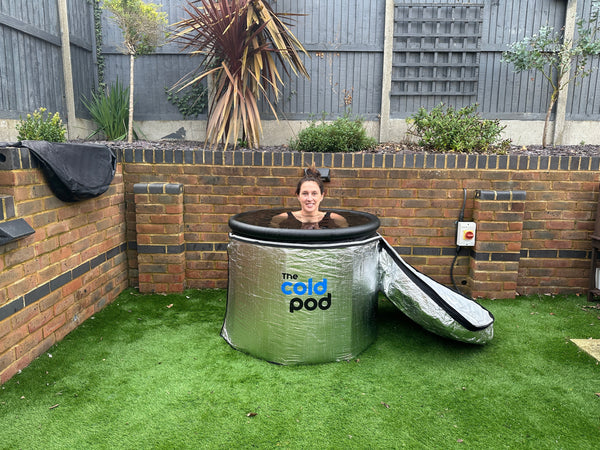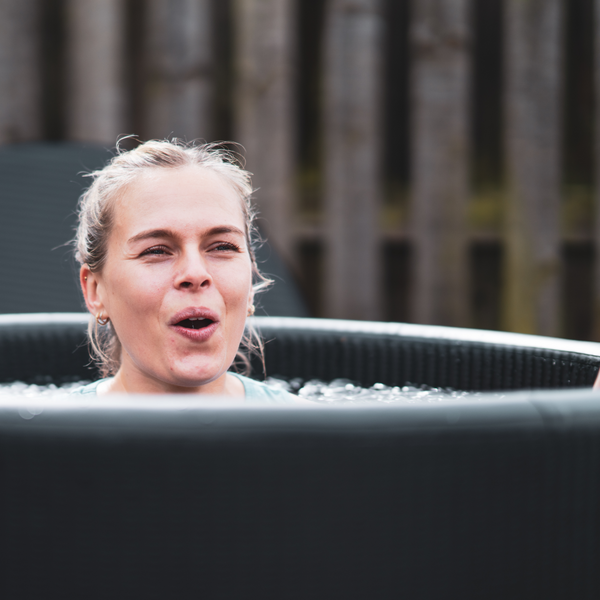Ice bath therapy, also known as cold water immersion therapy or ice bathing, has been gaining popularity among athletes and fitness enthusiasts in recent years. This practice involves immersing oneself in ice-cold water for a short period of time, with the goal of enhancing recovery and reducing muscle soreness.
The Science Behind Ice Bath Therapy
The physical effects of cold exposure on the body have been well documented. Blood flow is reduced and the blood vessels constrict in colder temperatures, which can reduce inflammation and promote healing. In addition, cold conditions may trigger endorphins to be released, which can lessen pain and lift mood.
During ice bath therapy, the body is exposed to extremely cold water, typically between 50-59°F (10-15°C). This cold water immersion triggers a number of physiological responses in the body, including the release of anti-inflammatory cytokines, increased oxygen uptake, and a reduction in muscle inflammation.
Benefits of Ice Bath Therapy
The benefits of taking an ice bath are numerous and widely known. The most often reported ones include:
- Decreased Muscle Soreness: It has been demonstrated that taking a cold water bath after working out reduces muscle soreness. This is supposed to be caused by the body experiencing less inflammation when exposed to cold temperatures.
- Improved Recovery: It has been demonstrated that cold therapy can improve recovery after exercise. The enhanced blood flow and oxygen uptake that take place when the body is exposed to cold temperatures are assumed to be the cause of this.
- Increased Immune Function: Immersion in cold water has been demonstrated to strengthen the immune system by boosting the generation of white blood cells and the body’s resistance to infection.
- Stress reduction: The endorphins released after a cold bath might help you unwind and lower your stress levels.
Incorporating Ice Bath Therapy into Your Wellness Routine
Ice bath therapy can be a valuable addition to your wellness routine, but it’s important to incorporate it safely and effectively. Here are some tips for incorporating ice bath therapy into your routine:
- Schedule regular ice baths: Consistency is key when it comes to seeing the benefits of ice bath therapy. Try to incorporate ice bath therapy into your routine on a regular basis, such as once or twice a week.
- Combine with exercise: Ice bath therapy can be especially effective when combined with exercise. Try taking an ice bath after a workout to aid in recovery and reduce muscle soreness.
- Gradually increase time and frequency: As you become more accustomed to ice bath therapy, try to increase the time spent in the water and the frequency of your immersions. Start with shorter periods of time and fewer immersions per week, and gradually increase as your body becomes accustomed to the cold water.
- Pair with other recovery methods: Ice bath therapy can be even more effective when paired with other recovery methods, such as foam rolling or massage therapy. Consider incorporating these methods into your wellness routine to enhance the benefits of ice bath therapy.
- Take care of your body: After your ice bath, take care to recover properly. Use a recovery tool, such as a foam roller or massage gun, to aid in recovery. Also, make sure to warm up gradually with a warm shower or by wrapping yourself in a warm blanket.
By following these tips, you can safely and effectively incorporate ice bath therapy into your wellness routine and experience its many benefits. Don’t forget to listen to your body and adjust your routine as needed to ensure a safe and effective experience.
Potential Risks and Precautions
Although though ice bath therapy has a number of advantages, it’s crucial to be aware of the risks and take preventative measures to ensure a safe experience. The following are some possible dangers and safety measures to consider:
- Hypothermia: Extended exposure to cold water can lead to hypothermia, which can be very dangerous. It’s essential to progressively lengthen your time in the water and to never stay in the ice bath for longer than is advised.
- Cardiovascular problems: Ice bath therapy may cause blood vessels to contract, which may add to the cardiovascular system’s pressure. Before attempting ice bathing, be sure to discuss any pre-existing cardiovascular conditions you may have with your doctor.
- Skin damage: Extended exposure to cold water can result in frostbite or skin discolouration, among other skin problems. You should gradually increase the length and frequency of your ice baths, and you should never stay in the water for longer than is advised.
To ensure a safe and effective experience, it’s important to take these precautions into consideration. If you have any pre-existing health conditions, it’s important to consult with your doctor before trying cold water immersion. It’s also important to listen to your body and adjust your routine as needed.
The Wim Hof Method and Ice Bath Therapy
The Wim Hof Method is a well-known wellness technique that combines meditation, breathing exercises, and cold exposure. A crucial aspect of this approach is ice bath therapy, and many practitioners of this method use ice baths to improve their physical and mental health. Here is how ice bath therapy and the Wim Hof Method combine:
- Cold exposure: A fundamental component of the Wim Hof Method is cold exposure. Practitioners can boost their immune systems, lessen inflammation, and generally improve their physical and mental well-being by exposing their bodies to frigid temperatures. Several of these advantages can be obtained by ice bath therapy, a potent kind of cold exposure.
- Breathing techniques: The Wim Hof Method also includes particular breathing techniques that might aid users in remaining composed and focused while exposed to chilly temperatures. Practitioners can spend more time in the ice bath by concentrating on their breathing and remaining relaxed.
- Meditation: The Wim Hof Method\’s third and final step includes meditation, which can support users’ concentration and centring during ice bath therapy. Practitioners can increase the psychological advantages of ice bath therapy, such as lowering tension and anxiety, by including meditation into their daily regimen.
Together, the Wim Hof Method and ice bath therapy can provide numerous physical and mental benefits. By regularly practicing the Wim Hof Method and incorporating ice bath therapy into your routine, you can experience the many benefits of these powerful wellness practices.
However, it’s important to take proper safety precautions when practicing the Wim Hof Method and ice bath therapy. Be sure to gradually increase the time and frequency of your ice baths, listen to your body, and never exceed the recommended time in the water. With proper precautions and regular practice, the Wim Hof Method and ice bath therapy can be powerful tools for enhancing your overall health and well-being.
Conclusion
Ice bath therapy is an effective method for speeding up recovery and easing muscular pain. You can enjoy the various advantages of ice bathing by understanding the science behind it and integrating it into your wellness routine. Cold water immersion is a method worth looking into, whether you’re an athlete trying to shorten your recovery period or just want to feel better overall. To keep safe and be aware of potential risks, it’s crucial to take precautions. Ice bath therapy can be a useful addition to your wellness routine with the right preparation and care. So why not check it out for yourself?







